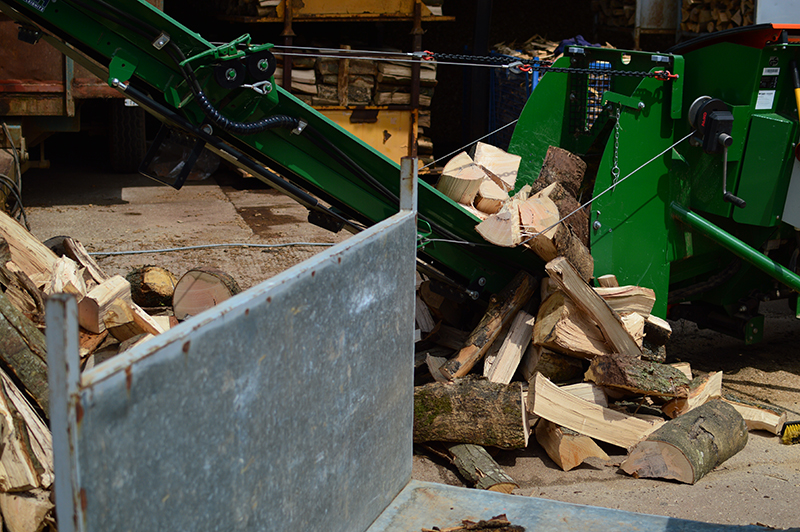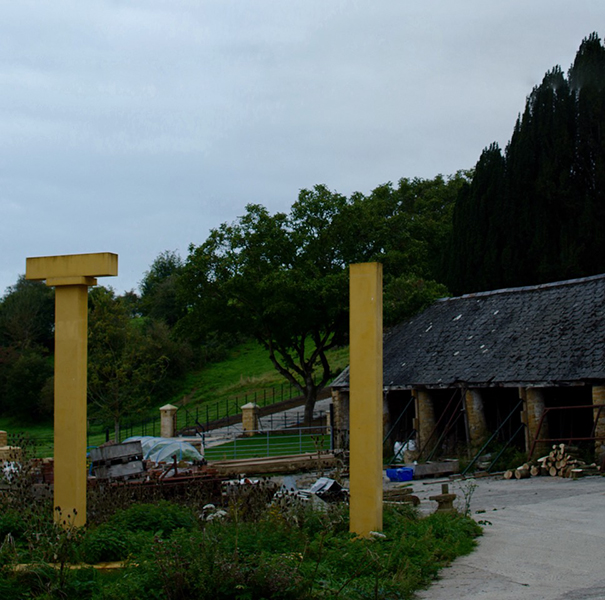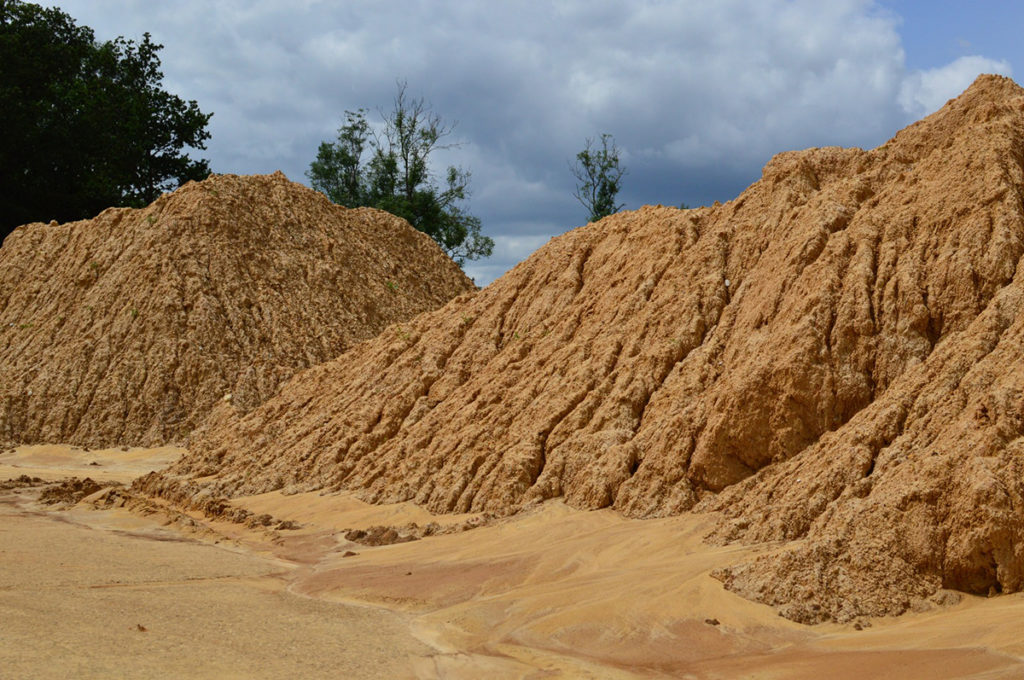
Education Oriented Otherwise
Marwa El Mubark
As an architect and educator who has taught across a number of schools in London, I am constantly made aware of the increasing presence of risk-averse and warranty-led pedagogical decision-making that shapes much of what can and cannot be taught in a university setting. Owing to its inherently iterative process, the discipline of design often […]
As an architect and educator who has taught across a number of schools in London, I am constantly made aware of the increasing presence of risk-averse and warranty-led pedagogical decision-making that shapes much of what can and cannot be taught in a university setting. Owing to its inherently iterative process, the discipline of design often risks being slow to react and effectively engage with solving real world problems. This pace is further stymied by institutional constraints which further decelerate and sometimes even curb the ambitions of pedagogical reform. These constraints, compounded with external pressures to replicate more conventional and often stagnating office environments – with all their problematic associations in order to prepare graduates for the ‘real world’ of practice – suffocate any possibility of failure and the emergence of experimental practices in a pedagogical setting.
In response to this timidity, and taking Beatriz Colomina’s ‘Radical Pedagogies’ – an atlas of intense, short-lived experiments in architectural education – as reference, I am citing three projects which push the risk appetites of institutions in different ways. Each of these explores a different type of risk, ranging from observations on health and safety to risks associated with unplanned project outcomes, and finally the risk-averse position of architects in practice and how this coincides with an increasingly marginalised position. All projects are looking to subvert the sedate and risk-averse nature of institutional bureaucracy in favour of a more active, risk-positive learning through direct engagement with site and context.

‘Material Cultures’, credit: CSM and Material Cultures
‘Carbon Copies’ was a module I co-tutored alongside ‘Material Cultures’ at Central Saint Martin’s University of the Arts which, in essence, challenged the health and safety and logistical constraints of the school by disrupting both how architects are traditionally taught and their agency within the larger cycle of construction. The module called on students to analyse five iconic residential typologies from the last century and to propose a Carbon Copy of the original design using low-embodied carbon materials. This translation was enacted through the construction of large, 1:1 model fragments featuring a wide range of non-mainstream, bio-based materials.
The student’s undertaking of these tasks revealed a plethora of institutional constraints and reservations. One hurdle included the imposition of weight limitations on models being constructed in the interest of health and safety (despite the fact that a natural bio-based material palette will weigh a considerable amount more than its original, 1960s counterpart if it is to comply with modern day thermal requirements), and the subsequent ban of a fire kiln used by students to fire clay as it was deemed to pose a fire risk. More than that, the constraints extended beyond the school’s walls as exemplified by the bureaucratic processes we as tutors worked through to allow a portion of student learning to take place in ‘ungoverned territory’; that is, sites of manufacture across the UK.
The 2020 Drawing Matter Summer School took learning about architecture away from the expected university setting into the rural Somerset setting of Shatwell Farm. In a landscape where change was the only constant, it was the perfect backdrop for a more intuitive type of learning. Through a series of design explorations over the course of a week, prospective architecture students were limited to re-using salvaged materials on site. As students who have not yet been introduced to architecture school with its own set of constraints, Shatwell provided an apt landscape in which to shape their attitudes to risk at a preliminary level. The risk of not ticking certain bureaucratic outcomes at university level – often shaped by national accrediting boards such as the ARB – were non-existent as briefs evolved day to day in an intuitive and responsive manner. Furthermore, this environment levelled the hierarchy between student and teacher that traditional classroom settings imply as both were unfamiliar with the site and the material resources it had to offer.
For the risk-averse world of pedagogical institutions, which favours planned and predictable outcomes in controlled settings, the countryside poses a sort of threat as a space for radical transformation, a messy intersection of heterogeneity far removed from the homogenising forces of cities making it the perfect territory for experimentation. Much like the sites of production which formed the basis for learning in Carbon Copies, the farmyard condition presented another type of ungoverned territory in which no two days were alike, and where the contextual and climatic conditions compelled students to embody the rhythm and workings of a real-life site.

‘Shatwell Farm’, credit: Marwa El Mubark
Throughout the summer school I was constantly reminded of Susan Sontag’s essay ‘On interpretation’, in which she chastises knowledge derived solely from books and advocates for a type of learning that is intuitive, and which emerges in the space between the observer and the object. This is important given that architecture is such a precedent-based discipline, prone to self-referencing and the repetition of past ideas. Within a controlled university setting, there is a danger that instinct becomes separated from intellect as students are fed information in order to tick boxes. Instinct operates on the opposite end of certainty. At times it can be counter-intuitive and therefore a useful tool in balancing the iterative and, at times, repetitive process of design. Design begins in the realm of imagination. Its translation from the immaterial to the material requires an instinctual leap of faith, albeit underpinned by real world conditions. The reinstatement of instinct as a valid line of inquiry, on a level with intellect or knowledge derived from books, is instrumental if we are to educate students with a sense of agency to become agile and adept at addressing society’s fast evolving needs and translating these into a material response.
‘Architecture is for others’ was a live build project to construct a potting shed in the Hogsmill Community Garden adjacent to the Kingston School of Art. Built entirely by first years, untrained in construction techniques and using simple modular materials, it gave agency to young architects starting out. In the current state of the profession where architects have been side-lined due to increasing specialist materials and subcontractors, it can also be read as a microcosm for how we might re-evaluate our position or agency within the larger construction industry. As a permanent structure open for public use, the live build project presented another type of ungoverned territory in which students learned to strike a balance between the needs of real-life clients while going beyond a temporary installation built to be graded and dismantled at a later point; demonstrating that a larger attitude towards building with purpose and for longevity can be part of a teaching agenda from the very start.
While overt material risks such as health and safety and collateral damage that ran through all three projects remain valid concerns, other covert risks – such as the mode of construction or usable materials – can vary depending on insurance cover and potentially limit a student’s scope of experimentation. Limited budgets are also another hidden risk, made visible in restrictions such as inability to involve external trades. While great at putting the onus on students to exercise the full extent of their skillset, these can also be limiting in that they are not able to promote a true collaborative process reflective of the workings of real-life practice. It is therefore the university’s role to ensure that a balance is achieved between this and enabling the type of experimental work that ensures pedagogical value is not prematurely compromised.
Ultimately what these pedagogies seek to do is redefine the discipline, questioning who has agency within it and where exactly the borders lie. This redefinition is intrinsically tied to our attitudes to risk. Of course, universities are only one part of the puzzle, being subservient in complying to the requirements of wider accrediting boards such as the RIBA and ARB. As long as these institutions remain the last to respond to seismic shifts within the profession, they continue to play a gatekeeping role in defining these boundaries by propagating risk-averse and at times redundant methodologies. It is therefore from within their confines that these frameworks must be reconfigured to service new pedagogical, and subsequently new practice models. By taking a simple decision to move learning outside the classroom to ungoverned territories such as a farm or site of production, universities can begin to distance themselves from the bureaucratic grip of governing bodies by sending a larger message about where they envisage future graduates positioning themselves within the wider wheel of culture production.

Architecture is for others’, credit: Marwa El Mubark
The implication of this in the world of practice cannot be understated. The construction industry’s increasing dependency on risk certification and collateral warranties, as well intentioned as it is to protect clients and end users, is symptomatic of an underlying culture predicated on risk aversion. This sense of security in turn dictates what clients feel comfortable specifying and, subsequently, what cultural narratives become established and legitimised through the act of building. As consultants add larger risk associated cost margins for untested design items and processes, bloating limited budgets and exacerbating low fees, there is a real need to redefine our attitude and relationship to risk starting at the educational level. We can catalyse a change in industry by bringing forward graduates that are comfortable with risk taking, and capable of directing risk associated costs towards testing and prototyping, allowing space for exploration and new practice models to emerge that are instigative of future change.
These projects demonstrate the capacity for education to act as a vehicle for subversive action, countering assimilation and disrupting outdated practice models rather than reinforcing and disseminating them. By empowering students to take agency and learning into their own hands, they can present a radical pedagogy and model for shifting our attitudes to material culture and, in turn, giving scope for new and underrepresented narratives in design to emerge.

‘Material Cultures’, credit: CSM and Material Cultures